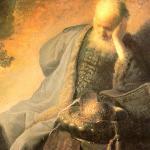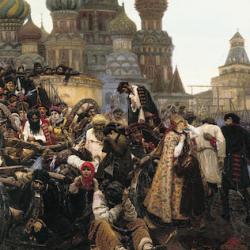In a TLS review of Kontantin Barsht’s Drawings and Calligraphy of Fyodor Dostoevsky, Robert Bird reminds us that Dostoevsky was a “trained draughtsman” who “thought in images no less than in words:
“He wrote frequently about painting, and many of his key terms suggest visual, rather than verbal communication, from ‘impression’ (vpechatlenie) to ‘disfiguration’ (bezobrazie). In his novels major characters first emerge as faces, and then persist as gazes; think of the self-sacrificing prostitute Sonya Marmeladova staring silently at Raskolnikov in her squalid room, and then at the crossroads.
Barsht isn’t interested in Dostoevsky’s use of visual artistic methods in his novels but in the graphic marginalia of his manuscripts. In Bird’s summary:
“Barsht’s book proposes a typology of the graphic devices deployed by Dostoevsky and a logic of their development over time: early in a work’s gestation Dostoevsky resorts to architectural details, but as ideas clarify they take the form of faces before settling into specific (though often enigmatic) verbal cues.”
Barsht attempts to decode these sketches and letters. A drawing of a girl’s head in a manuscript of Crime and Punishment is linked with several attempts at the word “Janus.” Why? Because, Barsht explains, Sonya was a divided character and features in many of the novel’s consequential comings and goings.”
Bird doesn’t think Barsht has cracked the code. He’s doubtful that there is a code. But the review is a good reminder of the visuality of Dostoevsky’s fiction.












